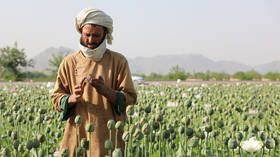World faces huge surge in cancer deaths – study

The annual global cancer death toll is projected to climb by nearly 75% by 2050, reaching 18.6 million, driven largely by population growth and aging, according to a study published in The Lancet on Thursday.
More than half of new cancer cases and two-thirds of deaths will occur in low- and middle-income countries, the latest update from the Global Burden of Disease Study Cancer Collaborators predicted.
“Cancer remains an important contributor to disease burden globally and our study highlights how it is anticipated to grow substantially over the coming decades, with disproportionate growth in countries with limited resources,” said lead author Dr. Lisa Force of the Institute for Health Metrics and Evaluation (IHME) at the University of Washington.
IHME, based in Seattle, leads the ongoing research, which draws on data from cancer registries and caregiver interviews dating back to 1990. Between 1990 and 2023, annual new cancer cases more than doubled to 18.5 million worldwide, and the upward trend is expected to continue.
Tobacco use – particularly among men – remains the leading cause of cancer mortality, responsible for an estimated 21% of all cancer deaths in 2023. In most countries it was the top risk factor, except in low-income nations where unsafe sex, leading to human papillomavirus (HPV) infections, ranked first.
Other major risks for men included alcohol consumption, unhealthy diets, occupational exposures, and air pollution. Among women, obesity and high blood sugar were significant contributors.
Co-author Dr. Theo Vos said the fact that so many cancer deaths stem from modifiable risk factors presents “tremendous opportunities” for prevention by targeting behaviors such as smoking, poor diet, and unsafe sexual practices.













